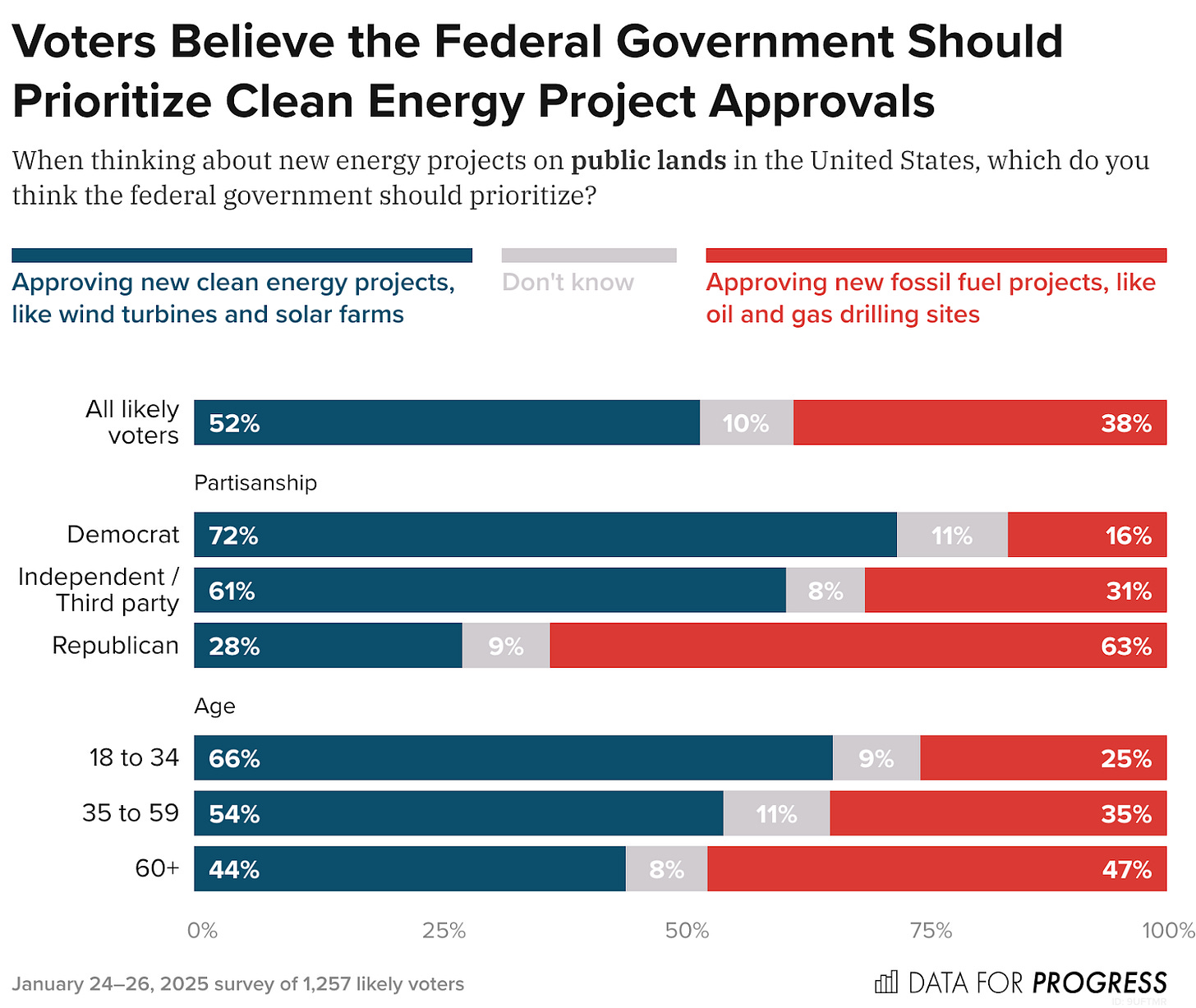DFP x CCI Present: Popular Solutions
Data for Progress and Climate and Community Institute's monthly snapshot of the widespread demand and pathways forward for climate action.
Intensifying political chaos and insufficient planning to combat climate and economic crises pose existential challenges. In this newsletter, we offer a monthly snapshot of the widespread demand for climate action and pathways forward.
Welcome to our first issue of Popular Solutions!
Tired of doom and gloom? Want to talk about building an alternative vision for the future? Us too.
Every month, we’ll be teaming up with our friends at Climate and Community Institute to bring you data and insights to drive the progressive movement for climate and economic justice forward.
In response to Trump’s return to power, progressives are building an alternative policy agenda. As Common Wealth’s Melanie Brusseler powerfully prescribes, only such a project “can resolve the pervasive economic precarity, political disempowerment, and indignity that characterize American life.”
It’s clear the system isn’t working. We need radical and bold solutions that get at the root of the intersecting crises we face. This is a space to build that vision together.
Voters Want to Prioritize Clean Energy Buildout — and High-Impact, Low-Harm Sites for Solar Abound
In January, the Trump administration paused billions of dollars of federal grant funding for green energy projects such as solar deployment around the U.S. But millions of people could see their energy costs reduced by solar energy — and a Data for Progress poll shows that over half of voters think the federal government should prioritize approving new clean energy projects on public lands, rather than new fossil fuel projects.
Furthermore, a plurality of voters (48%) say they would prefer a domestic energy production strategy that ramps up clean energy deployment on public lands while scaling back fossil fuel production on public lands, as compared with a strategy focused solely on expanding companies’ land access to accelerate fossil fuel production (42%).
People want solar — and its deployment needs to happen fast to reach green energy goals within the next decade. A recent report by Climate and Community Institute shows that there are nearly 226 million acres of high-benefit, low-harm acres available for solar deployment that meet environmental quality and social equity criteria — and we would need only 3.5 million to 15 million acres to make a green transition a reality.
CCI’s recent report makes the case for adding high-benefit, low-harm solar sites to the grid through planning, policy, and investment in new transmission and distribution infrastructures. CCI recommends a set of concrete steps:
Conducting whole-of-government, nationwide, multi-scalar land-use and site planning to identify high-benefit, low-harm solar sites across the country and organize deployment efficiently
Coordinating between federal, state, Tribal, and local governments to ensure that national planning coheres with local priorities
Embedding community, worker, and environmental benefits into solar deployment and development to build trust and support for the energy transition
Creating and expanding support for public and nonprofit solar deployment companies, unburdened by the duty of generating profits for shareholders
To meet this demand, we need federal planning efforts that benefit both the public and the planet. Solar deployment could happen with community benefits, coordination across levels of government, and public and nonprofit solar developers. But, if the federal government continues to block action, the U.S. will fail to meet the nation’s climate goals and slow down the advancing climate crisis.








